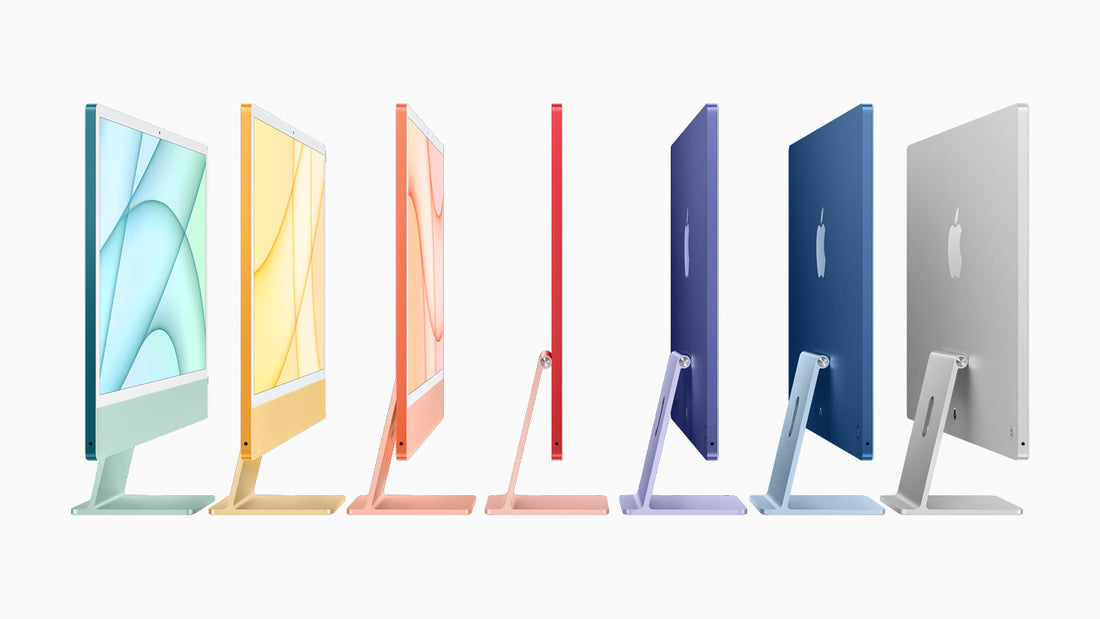
Here is everything we know about the next professional-grade iMac
Share
When Apple killed the iMac Pro, we thought it was the end of the road for high-end all-in-ones. It could be that Apple decided to bring the iMac Pro back from the dead and simply offer a more powerful all-in-one under the regular iMac brand. But given The rest of Apple's product line, it makes sense to offer a higher-performing iMac Pro than the 24-inch iMac. Whatever the final name, here's everything we know about the next professional-grade iMac.
1.Design: Bright colors or pastel tones?
The webcam on the 24-inch iMac is vastly improved.
When Apple redesigned the iMac in April 2021, it brought back the classic colorful look of the 1998 iMac G3. The new iMac comes in a range of funky colors, from pink to yellow to blue, giving a playful feel to apple's desire to make it as down-to-earth and approachable as its G3 inspiration.
Will the high-end iMac get the same treatment? As with price, that may depend on how Apple positions itself. If it brings back iMac Pro nomenclature, then we think it's unlikely. Apple's Pro devices typically come in soft "professional" colors, such as gray and silver.
The colorful look wasn't the only revamp the iMac got in April -- it got thinner, too. Will the iMac Pro retain this ultra-thin design? We think it's a great opportunity. Now that Apple has moved to Apple Silicon, it has started to install everything -- CPU, GPU, memory -- into a single system-on-chip (SoC) cell. Given the efficiency of The Apple Silicon chip and how much space the SoC takes up compared to systems that use separate GPUs and memory modules, the iMac may not need to be beefed up to accommodate it.
2.Bet on apple chips
The M1 is Apple's first attempt to use Apple Silicon's Mac chip.
Still, the shape of the iMac Pro is largely determined by the chip that powers it. The 24-inch iMac feels like the first Mac to be designed around the strengths of Apple Silicon, but that doesn't mean its higher-end sibling will take the same approach.
We know Apple is working on a huge 32-core chip, which could make it a high-end iMac or iMac Pro. Does a chip of this power require a large cooling system? Will Apple opt for a stand-alone graphics card, or will the upcoming soCs be enough for professional users? These questions remain unanswered, especially since we haven't seen any high-end Macs (such as the iMac Pro 16) that have traditionally come with separate graphics chips equipped with Apple Silicon chips to get to know Apple's preferred method.
3.XDR display seems likely
Apple's XDR technology made its debut on the Pro Display XDR.
The current iMac is 24 inches wide, up from the 21.5-inch model it replaces. The added size comes from Apple reducing the border around the edge of the screen. You can still buy the version with the 27-inch display, but this will almost certainly get the same treatment as the 21.5-inch version, and the screen size will be moved up a notch. Our money is in the 30 to 32-inch range.
As the screen size increases, so does the screen resolution. The 24-inch iMac has an impressive 4.5K resolution, compared to the 5K resolution of the current 27-inch iMac. However, as with the screen size, we expect a resolution to improve, as this is exactly what happened with the smaller iMac, from 4K to 4.5K. Apple's Pro Display XDR has a 6K resolution, so we think that's what Apple will target for the high-end iMac or iMac Pro.
iMac repair parts supplier
Do you need to repair your old iMac before the latest one hits the market?
Oriwhiz (Shenzhen DongYe Tengfei Electronic Co., Ltd) is a professional iMac repair parts, iPhone, iPad, iMac, Xiaomi, Huawei, Samsung, Sony, LG, Asus repair parts and repair tools supplier which has served thousands of repair shops with wholesale parts and hundreds of thousands of individual customers with the parts needed to fix their own digital devices. Welcome to contact us to get high-quality iMac repair parts and service.
